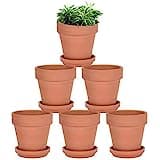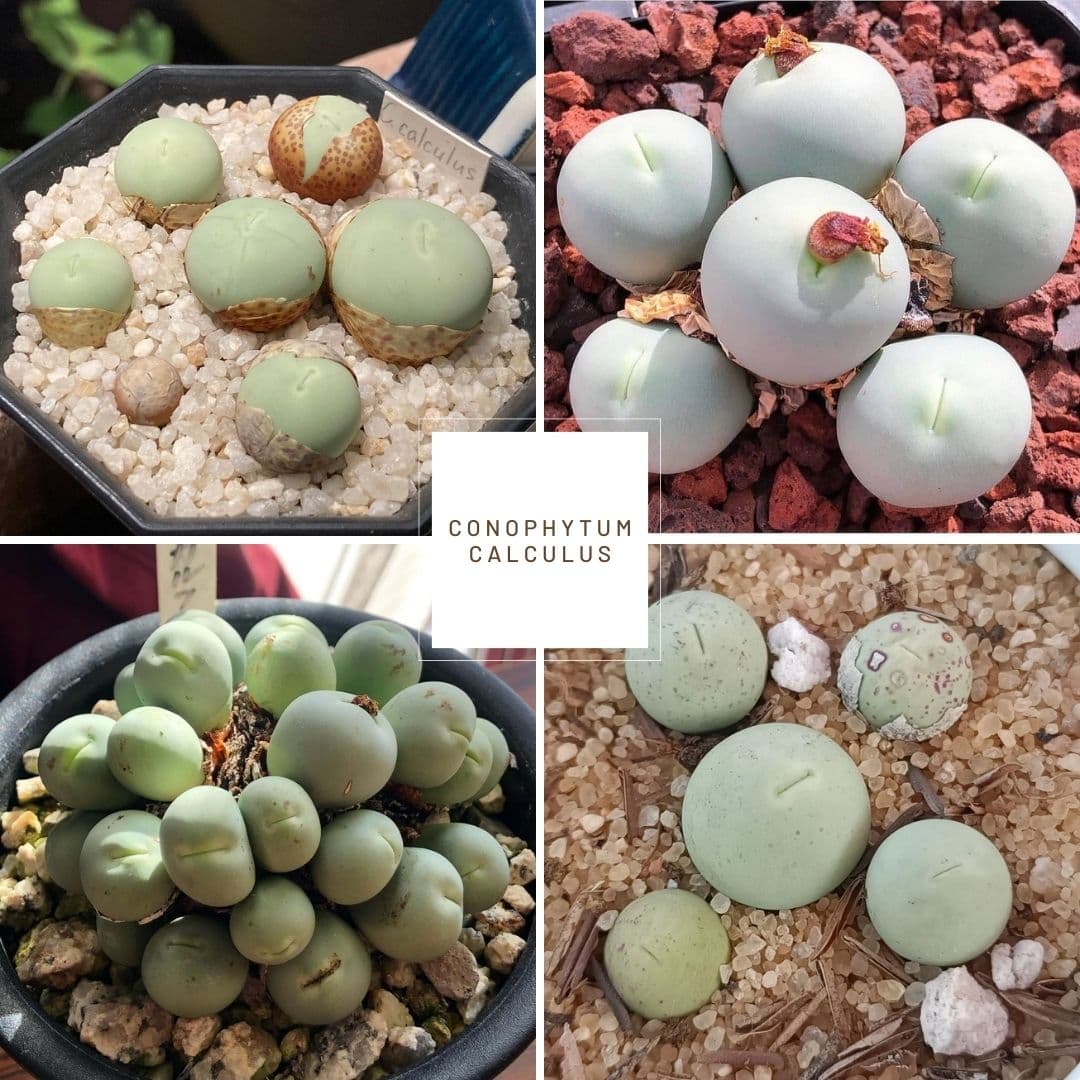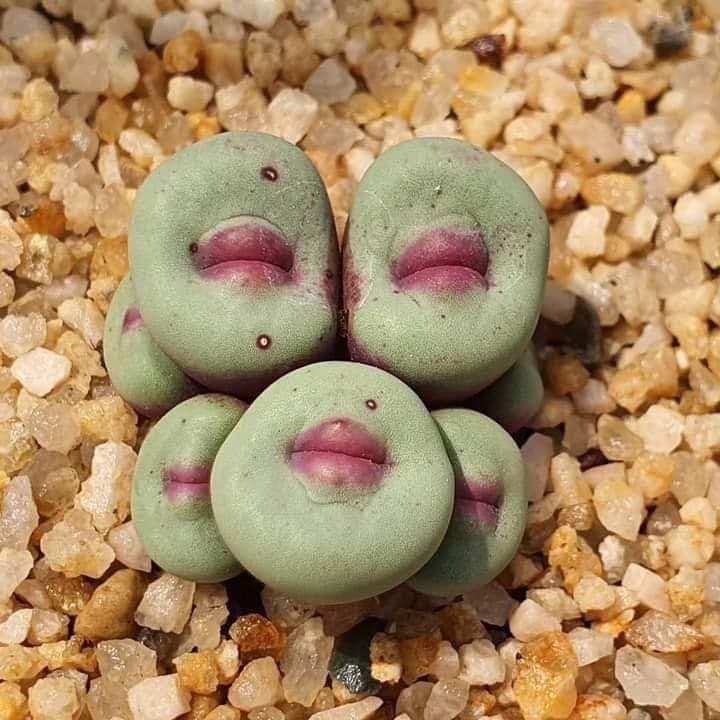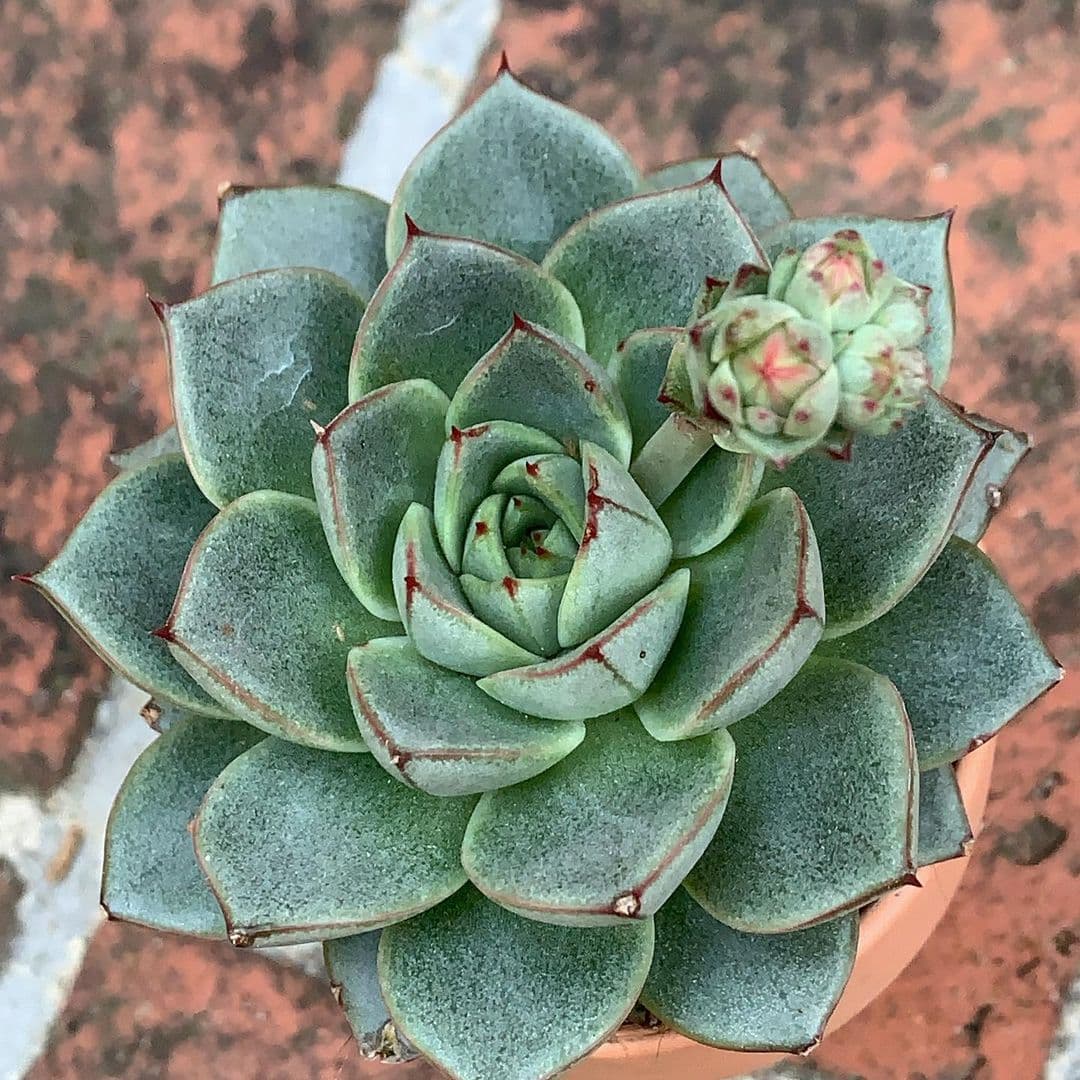Panda Plant
Posted by Grace on September 5, 2023
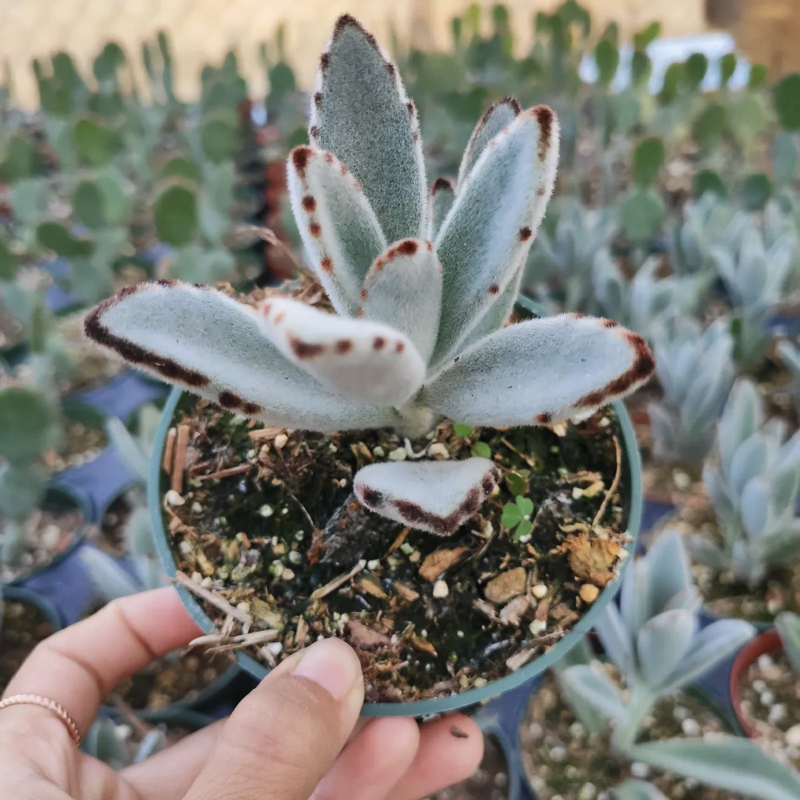 Panda Plant
Panda Plant
Quick Facts
- Native Habitat: Madagascar
- Family: Crassulaceae
- Water: Low to moderate
- Sunlight: Bright, indirect light
- Soil: Well-draining cactus or succulent mix
Contents
- Why it is called Panda Plant?
- The Appearance of Panda Plant
- How to Care for Panda Plant
- Is Panda Plant Toxic to Pets?
- How to Propagate A Panda Plant
- Where Can I Buy Panda Plant?
- FAQ
Why it is called Panda Plant?
The Panda Plant (Kalanchoe tomentosa) gets its name from the striking resemblance of its leaves to a panda's fur. The leaves are covered in soft, fuzzy, silver-white hairs with brown spots along the margins, creating a panda-like appearance.
The Appearance of Panda Plant
Panda Plant is a succulent that features compact, bushy growth. Its leaves are oval-shaped and covered in a velvety layer of tiny hairs, which gives them a unique texture and appearance. These leaves typically range from green to gray-green with brown or chocolate-colored spots along the edges. The plant can grow up to 1 to 2 feet (30 to 60 cm) in height.
 Panda Plant Bush
Panda Plant Bush
 Panda Plant Flower
Panda Plant Flower
How to Care for Panda Plant
Light
Panda Plants thrive in bright, indirect sunlight. They can tolerate some direct sunlight but should be protected from intense afternoon sun, which can scorch their leaves.
Watering
Water sparingly, allowing the top inch (2.5 cm) of soil to dry out between waterings. Overwatering can lead to root rot, so it's important to err on the side of underwatering with this succulent.
Soil
Use a well-draining cactus or succulent potting mix to ensure proper water drainage and prevent root rot.
Temperature
Panda Plants prefer temperatures between 60°F to 75°F (15°C to 24°C) and should be protected from frost.
Humidity
These succulents can adapt to a range of humidity levels, but they do well in average indoor humidity.
Fertilizing
Fertilize sparingly during the growing season (spring and summer) with a diluted, balanced liquid fertilizer every 4-6 weeks.
Pruning
Prune leggy or damaged growth to encourage a bushier appearance.
Repotting
Repot when the plant outgrows its current container or becomes root-bound, typically every 2-3 years.
Dormancy
During the winter months, reduce watering and allow the plant to rest. Growth may slow down during this period.
Pests and Diseases
Panda Plants are generally resistant to most pests and diseases, but be on the lookout for common succulent pests like mealybugs and aphids.
Is Panda Plant Toxic to Pets?
Yes, Panda Plant (Kalanchoe tomentosa) is toxic to pets, including cats and dogs. The plant contains compounds called bufadienolides, which can be harmful if ingested. These compounds can cause various symptoms of toxicity in pets, such as:
-
Gastrointestinal Irritation: Ingesting Panda Plant leaves can lead to symptoms like drooling, vomiting, and diarrhea in pets.
-
Cardiac Issues: Bufadienolides affect the heart and can lead to abnormal heart rhythms (arrhythmias), increased heart rate (tachycardia), and potentially more severe cardiac issues.
-
Muscle Tremors: Pets may experience muscle tremors or seizures if they consume a significant amount of the plant.
-
Lethargy: Affected animals might become lethargic and weak.
It's essential to keep Panda Plants out of reach of pets and to be cautious if you have these plants in your home. If you suspect your pet has ingested any part of a Panda Plant or is showing symptoms of poisoning, contact your veterinarian or an emergency animal clinic immediately. Swift action is crucial in treating plant toxicity in pets.
How to Propagate A Panda Plant
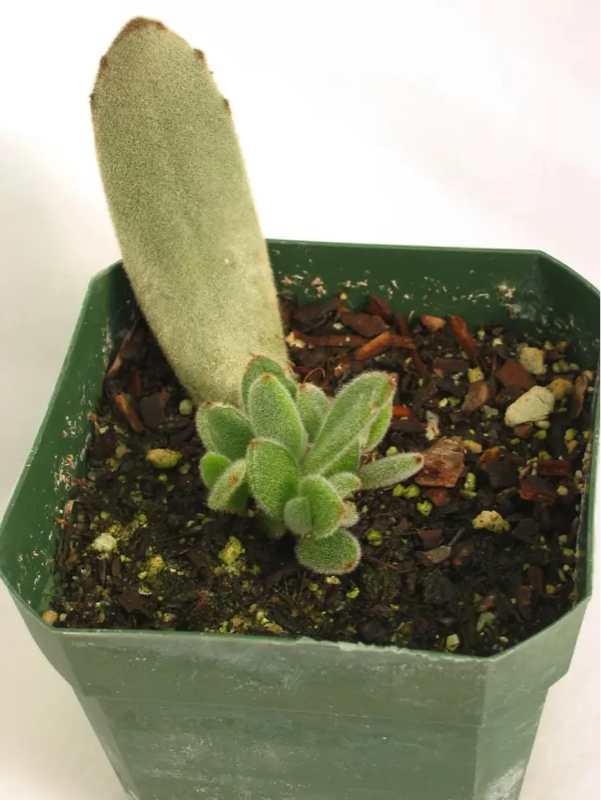 Panda Plant leaf propagation
Panda Plant leaf propagation
Propagating a Panda Plant (Kalanchoe tomentosa) can be done through stem or leaf cuttings. Here's a step-by-step guide on how to propagate a Panda Plant:
Materials You'll Need:
- Healthy Panda Plant
- Pruning shears or a sharp knife
- Well-draining potting mix
- Small pots or containers
- Plastic bags or plastic wrap
- Rooting hormone (optional)
- Watering can or spray bottle
Propagation Steps:
-
Choose a Healthy Parent Plant: Select a mature and healthy Panda Plant as your parent plant for propagation. Make sure it's free from diseases or pests.
-
Prepare Your Tools: Clean your pruning shears or knife with rubbing alcohol to minimize the risk of infection. Additionally, prepare your small pots or containers with well-draining potting mix.
-
Take Stem Cuttings:
- Using your clean shears or knife, snip off a healthy stem section from the parent plant. The cutting should be about 3-4 inches (7.5-10 cm) long.
- Allow the cut end of the stem to callus for a day or two. This helps prevent rotting when you plant it.
-
Prepare Leaf Cuttings (Optional):
- You can also propagate Panda Plants from individual leaves.
- Carefully remove a healthy leaf from the parent plant. Make a clean cut at the base of the leaf, ensuring you get the entire leaf, including the petiole (stem-like structure).
- Allow the leaf cutting to air dry for a day to let the cut end callus.
-
Plant the Cuttings:
- For stem cuttings, plant them in the prepared pots or containers filled with well-draining potting mix. You can dip the cut end in rooting hormone (optional) before planting.
- For leaf cuttings, you can either lay them on top of the soil or plant them shallowly, burying just the cut end of the petiole.
-
Provide the Right Conditions:
- Place the pots in a location with bright, indirect sunlight. Avoid direct sun, as it can scorch the cuttings.
- Keep the soil lightly moist but not soggy. You can mist the cuttings with a spray bottle to maintain humidity.
- Cover the pots with plastic bags or plastic wrap to create a mini-greenhouse effect. This helps maintain humidity and encourages root growth.
-
Monitor and Wait:
- Be patient; it may take several weeks to a few months for roots to develop, depending on the propagation method and environmental conditions.
- Check for root growth by gently tugging on the cutting. If you feel resistance, roots are forming.
-
Transplanting:
- Once the cuttings have developed sufficient roots (several inches long), you can transplant them into larger pots with regular Panda Plant care.
Remember that not all cuttings may succeed, so it's a good idea to take several cuttings to increase your chances of success. Additionally, propagating Panda Plants is typically done during the growing season in spring or summer when the plant is actively growing.
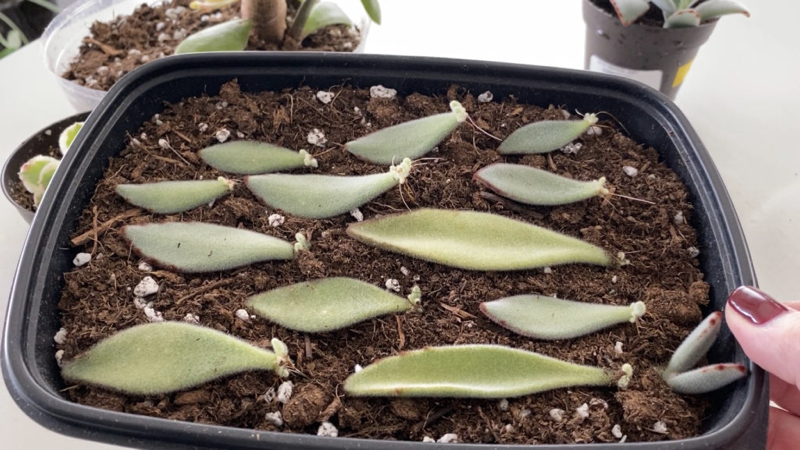 Panda Plant leaf propagation
Panda Plant leaf propagation
Where Can I Buy Panda Plant?
You can purchase Panda Plants at local nurseries, garden centers, or online succulent shops. They are a popular choice among succulent enthusiasts and are often readily available.
FAQ
Do panda plants like full sun or shade?
Panda plants thrive in full, direct sun, but they can also be quite happy in medium sunlight as well. Just be sure they get at least 6 hours of sunlight a day. When planting, choose a soil formulated for cacti or succulents that is well-draining. While they do need water, they are highly drought-resistant and can easily rot if overwatered.
How big does the Panda plant get?
In its natural habitat, Kalanchoe panda plants develop a woody base and can grow to several feet in height (about 1 meter). However, when cultivated as indoor plants, their growth is constrained by the size of the container, typically reaching heights of only 1 to 2 feet (31-61 cm) and a width of 2 feet (61 cm).


